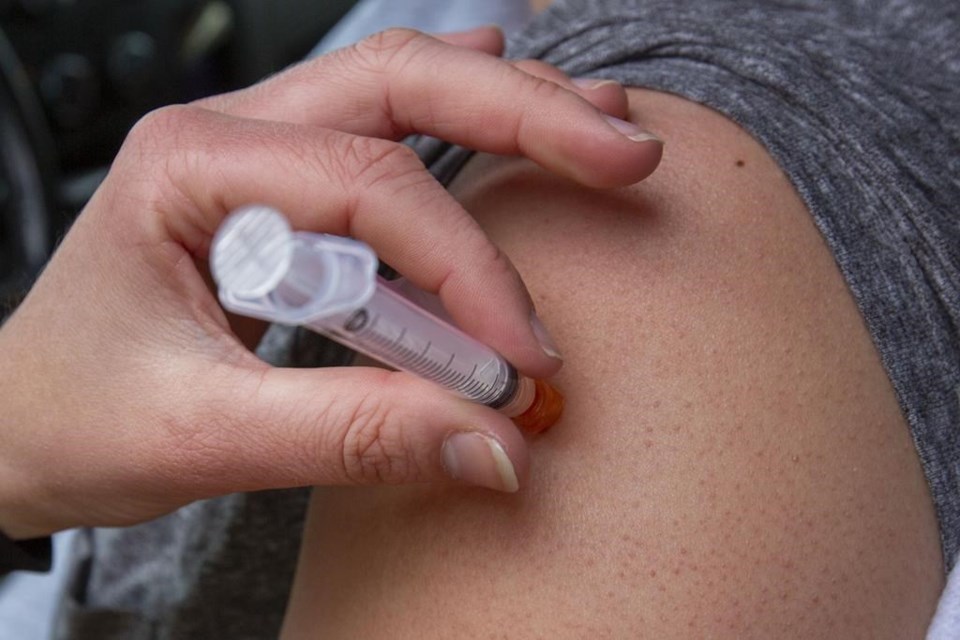TORONTO — Intensive care occupancy will likely rise in Ontario over the coming months along with a steady growth in cases, but it's unclear how severe the new spike will be, according to new projections from the province's pandemic advisers.
The new modelling published Friday from the Ontario COVID-19 Science Advisory Table noted that hospitalizations and intensive care numbers are currently stable. But intensive care admissions — a "lagging indicator" of rising cases — will likely total around 200 patients by the new year.
As of Friday there were 130 patients in Ontario intensive care due to COVID-19. Ontario also reported 598 new COVID-19 cases and four deaths from the virus, marking over a week of growth in the province's seven-day average for new infections.
Science table member Dr. Fahad Razak said the recent period of case growth is likely to continue, but the full picture is still developing.
"The data that remains to be seen ... will be what the trajectory of this rise is and whether it plateaus or if it continues to rise," the internist at St. Michael's Hospital in Toronto said Friday.
Razak said time will have to tell if stronger public health measures will be necessary to avoid a fifth wave like those playing out in parts of Europe, where countries are considering new lockdown measures amid record-high infection tallies.
The science table's report flagged that COVID-19 cases are rising in most of the province’s public health units. Test positivity is also increasing while testing rates remain flat, indicating a real rise in cases, the group said. It's difficult to predict beyond this month, but Razak said it's likely case daily case numbers will range from 600 to 1,000 in the coming weeks.
Canada's deputy chief public health officer also noted the uptick in Ontario cases during a federal pandemic briefing on Friday, saying "it might be necessary to implement more restrictive public health measures" at some point.
The recent Ontario bump is linked in the report to colder weather driving people indoors and capacity limits lifted on some settings in October, including stadiums, restaurants and gyms, which are all accepting proof of vaccination.
Razak and they science table support the government's decision to pause further reopening plans in light of the case increase. Nightclubs, strip clubs, sex clubs and bathhouses were due to lose capacity limits next week but those limits will now be in place for at least another month.
The public health unit in Sudbury, Ont., reinstated capacity rules and some other measures this week amid a rapid local rise in cases. The province's health minister said the province will continue taking that kind of local approach to areas of high transmission for now.
Razak said the local approach is reasonable at the moment, along with slowing the reopening plan overall, but it might have to change if the trends get so severe that the health system is threatened.
He said other measures like stricter enforcement of mandatory indoor mask and proof-of-vaccination rules and fewer private social gatherings might also help the current case trend plateau and avoid a severe fifth wave.
The pending approval of COVID-19 vaccination for children aged five to 11 may also change the picture, he said.
As cases are expected to rise into the winter, the science table also pointed out that risk from the disease remains inequitable. Lower-income people, essential workers and minority groups have a greater chance of dying from the illness. According to the group's research, the mortality gap between the richest and poorest COVID-19 patients has widened over the course of the pandemic.
Overall high vaccination coverage also hides inequities across communities, the experts said. In Toronto, for example, fewer than 60 per cent of Indigenous adults are fully vaccinated, compared with a rate higher than 80 per cent for the city's total adult population.
Another vaccination gap that's corresponded with higher rates of infection is playing out in younger adults, who have lower rates of vaccination than older Ontarians.
Razak said it's important to stress the risk of "long COVID" symptoms for young people still unvaccinated.
"Having 20 or 30-year-olds have a lifetime of illness because of an infection that's preventable by vaccination I think is a really, really important thing to focus on," he said.
Health Minister Christine Elliott said the province will continue with a "phased and cautious approach" to reopening the economy and will keep assessing public health indicators.
She noted that an increase in cases amid cooler weather and loosened public health restrictions was "always expected" and said the months ahead will require "continued vigilance."
This report by The Canadian Press was first published Nov. 12, 2021.
Holly McKenzie-Sutter, The Canadian Press

